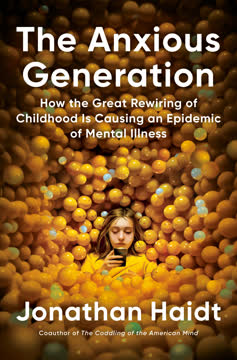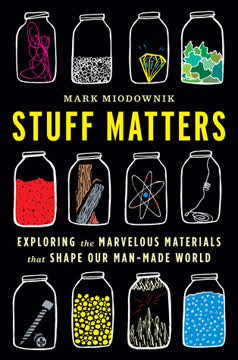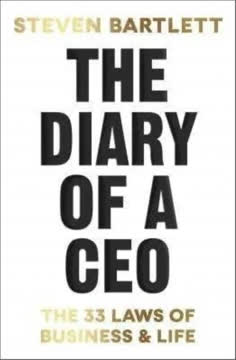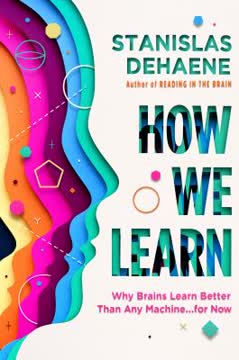重点摘要
1. 工作记忆有限,学习需依赖组块
由于环境信息几乎无限,长期记忆容量也极大,而工作记忆——我们记忆系统中唯一有限的部分——成为瓶颈。
认知瓶颈。 工作记忆是意识思考的场所,一次只能处理少量信息(约4-7个)。这一限制成为学习的主要障碍。环境和长期记忆容量无限,但工作记忆却是瓶颈。
组块应对复杂性。 为突破限制,我们将较小的信息单元“组块”成更大、更有意义的单位存入长期记忆。这样可以在不超负荷工作记忆的情况下思考更复杂的内容。例如:
- 字母组合成单词
- 单词组合成句子
- 句子组合成段落
- 简单数学事实组合成复杂方程
自动化提升效率。 通过练习,这些组块变得自动化,减少对工作记忆的占用,从而释放认知资源用于新知识的学习。新信息比熟悉信息占用更多工作记忆容量。
2. 生物学上的初级知识与次级知识:教学重点
生物学上的次级知识是指因文化需求而必须掌握的知识。
进化知识与文化知识。 生物学上的初级知识,如语言和社交技能,是自然且无意识习得的;而次级知识,如学科内容,则需有意识的努力和指导。
聚焦次级知识。 学校主要教授生物学上的次级知识,因为这些知识不是自然获得的。例子包括:
- 数学
- 科学
- 历史
- 文学
有争议的观点。 书中提出初级技能难以直接教授,这一观点存在争议。但认知负荷理论的核心原则无论如何依然有效。
3. 内在负荷与外在负荷:聚焦关键内容
为提升学习效果,应减少外在负荷,优化内在负荷。
两种负荷。 内在认知负荷是材料本身的难度;外在认知负荷则源于材料呈现方式。目标是最小化外在负荷,优化内在负荷。
内在负荷不可避免。 若要掌握核心概念,内在负荷是必须承受的。例如,学习阅读需将字母与发音对应,这是我们希望学生投入的认知负荷。
外在负荷是浪费。 外在负荷无益且阻碍学习,如使用分散注意力的图片或复杂排版。减少外在负荷可释放工作记忆用于处理内在负荷。
4. 领域专属知识是专业能力的关键
在任何生物学上的次级领域,初学者与专家的主要差异往往体现在长期记忆中所持有的知识量上。
无通用技能。 领域通用技能如问题解决能力无法直接教授。专业能力是领域专属的,依赖特定领域的知识。
专家拥有更多知识。 初学者与专家的主要区别在于专家长期记忆中储存了大量相关领域知识。专家拥有丰富的情境→行动对。
知识即力量。 若想提升某领域的问题解决或批判性思维,必须增加该领域的知识。初学者依赖思维技能,专家依赖知识。
5. 元素交互性:认知负荷的根源
元素交互性是所有内在负荷和外在负荷的来源。
交互元素。 学习材料的难度取决于工作记忆中需同时处理的交互元素数量。元素越多、交互越复杂,认知负荷越高。
低交互与高交互。 低元素交互的材料可单独学习;高元素交互的材料需同时处理多个元素。例如:
- 学习单词属于低交互
- 在地图上找坐标属于高交互
依赖学习者。 元素交互性受任务和学习者已有知识影响。专家感受到的元素交互性低于初学者。
6. 优化内在负荷:预教、分段、排序
内在负荷通过合理的课程排序得以优化。
调整负荷。 内在负荷可根据情况增加、减少或维持,目标是充分利用工作记忆而不致超载。
预教降低负荷。 预先教授词汇、角色、事件或技能,减少主体课程的认知负荷,使学生能专注于新信息。例如:
- 阅读文本前预教关键词汇
- 阅读小说前预教角色
- 应用新内容前预教技能
分段降低复杂度。 将任务拆分为更小、更易管理的部分,降低内在负荷。方法包括:
- 构建技能层级
- 剔除任务元素
- 采用正向或逆向链式排序任务
7. 减少外在负荷:避免冗余、分散注意力、瞬时信息
优良的教学设计能最大限度减少外在负荷。
减少干扰。 外在负荷指任何分散核心学习内容注意力的因素,应尽量减少以释放工作记忆。
冗余是浪费。 避免同时以多种形式呈现相同信息(如文字与口语),冗余信息会争夺工作记忆资源。
分散注意力阻碍整合。 相关信息应空间和时间上靠近,避免注意力在不同信息源间分散。
瞬时信息易遗忘。 避免呈现快速消失的信息,提供书面笔记或讲义以减轻记忆负担。
8. 模态效应:利用视觉与听觉通道
模态效应指同时通过视觉和听觉通道呈现相关信息,利用工作记忆的“双通道”特性。
双通道。 工作记忆拥有独立的视觉和听觉通道,同时使用两者可提升学习效果。
消除视觉分散。 通过视觉呈现部分信息,听觉解释另一部分,避免视觉注意力分散。例如,展示图表同时口头讲解。
避免瞬时陷阱。 注意不要让听觉通道信息过载,提供书面材料供后续复习。
避免冗余陷阱。 不要同时以书面和口头形式重复同一信息,模态效应强调不同通道传递不同信息,而非冗余。
9. 例题示范:结构化与持续练习
例题示范替代传统课后习题列表,但不替代教师授课。
引导练习。 例题示范不仅是教学模型,更是学生初课后进行的引导练习,替代大量习题。
结构清晰。 例题示范需结构合理,减少外在负荷,考虑冗余、瞬时、分散注意力和模态效应。
持续练习达成掌握。 持续使用例题示范,直到学生完全理解内容,避免过早转向独立解题。
交替与渐隐。 通过例题与习题交替练习,逐步减少示范步骤,实现渐隐教学。
10. 自我解释:将例题与原理连接
学生通过自我解释,将例题与其背后的原理联系起来,或解释为何某原理适用于特定例题。
解释促进学习。 学生需主动自我解释例题,连接深层原理,帮助超越表面特征,理解深层结构。
具体提示。 使用引导学生解释例题具体步骤的提示,可为选择题、填空或自由回答。
通用提示。 训练学生自发进行自我解释,使用关注过程、联系、预期或原理的通用提示。例如:
- 你具体在做什么?
- 这条新信息如何帮助理解?
- …和…有何相似?
- 接下来会发生什么?
自我解释非自学。 自我解释不是替代明确教学,而是将新例题与已学原理连接的方式。
11. 无目标效应:关注学习过程而非仅仅答案
认知负荷理论表明,过分关注目标反而不利学习。
目标可能阻碍学习。 过度关注特定目标,学生可能只关注达成手段,忽视理解背后原理。
去除目标。 去除明确目标使学生专注于学习过程,促进更深层理解和迁移。
受限操作、快速反馈、可靠结果。 无目标效应在操作受限、反馈迅速且结果可靠的环境中效果最佳,数字学习环境尤为适合。
转向理解。 鼓励学生实验、观察、理解因果关系,这种方法比单纯追求正确答案更有助于学习效果。
最后更新日期:
FAQ
What's "Sweller's Cognitive Load Theory in Action" about?
- Overview: "Sweller's Cognitive Load Theory in Action" by Oliver Lovell explores how Cognitive Load Theory (CLT) can be applied in educational settings to enhance teaching and learning.
- Purpose: The book aims to bridge the gap between educational research and classroom practice by providing actionable strategies for teachers.
- Structure: It is divided into three parts: understanding the theory, optimizing intrinsic load, and reducing extraneous load, with practical examples throughout.
- Audience: The book is intended for educators, school leaders, and anyone interested in improving instructional methods based on cognitive science.
Why should I read "Sweller's Cognitive Load Theory in Action"?
- Practical Application: The book offers practical strategies for applying Cognitive Load Theory in the classroom, making it a valuable resource for teachers.
- Research-Based: It is grounded in extensive research and includes insights from John Sweller, the originator of CLT, ensuring the content is both credible and authoritative.
- Improves Teaching: By understanding and applying CLT, educators can enhance their teaching effectiveness and improve student learning outcomes.
- Accessible Language: Oliver Lovell distills complex concepts into understandable language, making the book accessible to educators without a background in cognitive science.
What are the key takeaways of "Sweller's Cognitive Load Theory in Action"?
- Cognitive Architecture: Understanding the limitations of working memory and the role of long-term memory in learning.
- Intrinsic vs. Extraneous Load: The importance of optimizing intrinsic cognitive load and minimizing extraneous load to enhance learning.
- Instructional Strategies: Practical methods such as worked examples, segmentation, and pre-teaching to manage cognitive load.
- Expertise Reversal Effect: Recognizing that instructional strategies may need to change as students become more knowledgeable.
How does Oliver Lovell suggest optimizing intrinsic load in the classroom?
- Pre-Teaching: Introduce key vocabulary and concepts before the main lesson to reduce cognitive load during learning.
- Segmentation: Break complex tasks into smaller, manageable parts to prevent cognitive overload.
- Skills Hierarchy: Develop a hierarchy of skills to ensure foundational knowledge is built before tackling more complex tasks.
- Adjusting Load: Continuously assess and adjust the intrinsic load based on student feedback and performance.
What strategies does "Sweller's Cognitive Load Theory in Action" recommend for reducing extraneous load?
- Eliminate Redundancy: Avoid presenting the same information in multiple formats simultaneously, such as spoken and written.
- Integrate Information: Place related information close together in space and time to reduce the cognitive load of integration.
- Manage Transient Information: Provide written or visual aids to support information that is fleeting or complex.
- Use Dual Modality: Present information using both visual and auditory channels to maximize working memory capacity.
What is the "expertise reversal effect" as discussed in "Sweller's Cognitive Load Theory in Action"?
- Definition: The expertise reversal effect occurs when instructional methods that are effective for novices become less effective as learners gain expertise.
- Implications: Novices benefit from worked examples, while more experienced learners may benefit more from problem-solving practice.
- Instructional Adaptation: Teachers should adapt their instructional strategies based on the learners' level of expertise in a specific domain.
- Dynamic Approach: Recognizing the expertise reversal effect encourages a dynamic approach to teaching, where methods evolve with student progress.
How does Oliver Lovell explain the role of worked examples in learning?
- Definition: Worked examples are step-by-step demonstrations of how to solve a problem, used as a learning tool.
- Benefits: They reduce cognitive load by providing a clear model for students to follow, especially effective for novices.
- Alternation Strategy: Lovell suggests alternating between worked examples and practice problems to reinforce learning.
- Fading Technique: Gradually remove steps from worked examples to encourage independent problem-solving as students gain confidence.
What is the "goal-free effect" and how can it be applied in education?
- Concept: The goal-free effect suggests that removing specific goals can reduce cognitive load and enhance learning by focusing on understanding rather than achieving a set outcome.
- Application: Encourage students to explore and experiment without a fixed goal to promote deeper understanding and transfer of knowledge.
- Pre-Conditions: Effective when actions are restricted, feedback is rapid, and results are reliable, often facilitated by digital learning environments.
- Benefits: Shifts focus from achieving the correct answer to understanding the process, leading to better problem-solving skills.
What are some best quotes from "Sweller's Cognitive Load Theory in Action" and what do they mean?
- "Cognitive Load Theory is a series of instructional recommendations built upon knowledge of how humans learn." This quote encapsulates the essence of CLT as a practical guide for educators based on cognitive science.
- "In order to increase learning, reduce extraneous load and optimize intrinsic load." This highlights the core principle of CLT, emphasizing the need to manage cognitive load for effective learning.
- "The purpose of instruction is to increase the store of knowledge in long-term memory." This underscores the ultimate goal of teaching: to build lasting knowledge that students can draw upon.
- "An excessive focus on goals can lead to students successfully completing a task, but learning very little from it." This warns against the pitfalls of goal-oriented learning, advocating for a focus on understanding and process.
How does "Sweller's Cognitive Load Theory in Action" address the use of technology in learning?
- Digital Environments: The book discusses the use of digital tools to facilitate goal-free learning and provide rapid feedback.
- Simulations: Technology can create simulations that allow students to experiment and understand complex concepts without cognitive overload.
- Self-Management Tools: Lovell suggests using technology to help students manage their own cognitive load, such as through learning apps and software.
- Caveats: While technology can enhance learning, it must be used thoughtfully to avoid introducing extraneous cognitive load.
What future research directions does Oliver Lovell propose in "Sweller's Cognitive Load Theory in Action"?
- Self-Management of Cognitive Load: Investigating how students can be taught to manage their own cognitive load effectively.
- Learner Empowerment: Exploring ways to use CLT to empower students to become more independent learners.
- Technology Integration: Further research into how technology can be used to support cognitive load management in diverse learning environments.
- Biologically Primary Skills: Examining how CLT can be applied to cultivate biologically primary skills, despite challenges in direct teaching.
How can teachers apply the principles of "Sweller's Cognitive Load Theory in Action" in their classrooms?
- Start with Theory: Begin by understanding the cognitive architecture and principles of CLT to inform instructional design.
- Practical Strategies: Implement strategies like worked examples, segmentation, and pre-teaching to manage cognitive load.
- Continuous Assessment: Regularly assess student understanding and adjust instructional methods to optimize learning.
- Professional Development: Engage in ongoing professional development to deepen understanding of CLT and its applications.
评论
《斯韦勒认知负荷理论实战》广受读者好评,平均评分高达4.50分(满分5分)。评论者称赞其内容清晰易懂,且具有很强的实用性,特别适合教育工作者阅读。许多人认为这本书是教师必读之作,书中对认知负荷理论的简明阐释以及其与学习过程的紧密关联令人印象深刻。该书不仅提供了切实可行的策略,还涵盖了多个学科的具体案例。读者们赞赏洛维尔将复杂理论提炼为浅显易懂的见解,使其既适合有经验的教育者,也适合刚接触该理论的新手。
Similar Books











